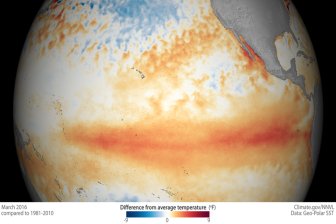For those experiencing the aftermath of Hurricane Irma, which roared through Florida this past weekend, severe flooding is likely to be a major issue.

Several northern Florida cities were flooded Monday as the hurricane was downgraded to a tropical storm. “Stay inside. Go up. Not out,” Jacksonville’s website warned residents. “There is flooding throughout the city.”
Furthermore, Texas counties are still recovering from the mass flooding that followed Hurricane Harvey at the end of August.
In situations such as these, repairing severe water damage can prove a massive undertaking. It’s often difficult to know how to maintain your own safety while taking steps to address the damage to your home.
Here are a few guidelines for staying safe while cleaning up the aftermath of major flooding, how to contact your insurance provider, and how to secure a government loan if you haven’t previously purchased flood insurance.
How to safely begin repairing damage to your home
FEMA (Federal Emergency Management Agency) recommends that those affected by a severe storm take care to listen to local officials for instructions, watch out for debris and downed power lines, and stay out of damaged buildings and homes until they are cleared by local authorities.
The Florida Division of Emergency Management also tweeted that residents should avoid flood waters as they could contain raw sewage and sharp objects. In addition, in the aftermath of Hurricane Harvey, the United States Environmental Protection Agency issued a statement warning about the potential contamination of all flood water.
“Avoid contact with flood water due to potentially elevated levels of contamination associated with raw sewage and other hazardous or toxic substances that may be in the flood water,” said the online statement.
Dr. Richard Bradley, chief of the division of emergency medical services and disaster medicine at the University of Texas Health Science Center at Houston told TIME that flood water is particularly toxic because it mixes with everything below it.
In addition, consumer advocate group United Policyholders recommends that homeowners also complete an inventory valuing all the damage and costs to repair the property. Lastly, after the residence has been deemed safe and you’ve taken photos of all the damage, dry out the home by opening windows or using fans to avoid mold growth and additional damage.
Mold can develop within 48 hours of a flood, so remove wet contents from the home and use a sump pump or wet vacuum to remove water. If an item has been wet for less than 48 hours, it may be salvageable.
How to file an insurance claim
In the United States, homeowners damage is excluded under the standard homeowner’s insurance, and interested homeowners need to purchase a separate policy from the government’s National Flood Insurance program (NFIP).
Individuals directly impacted by the hurricane should contact their insurance provider as soon as possible, according to United Policyholders. Locate the policies you may have on your home, auto and other property, and review the coverages and limitations.
FEMA tells individuals to photograph any damage to your property to assist in filing an insurance claim. If you clean or dry your home before taking photos, you may decrease the amount of damage recovery you are entitled to. While removing wet items from the home, make note of any large or high-value items before disposing of them to later bring to your insurance provider.
The NFIP provides coverage of up to $250,000 for the structure of a residence and up to $100,000 for possessions, according to the Insurance Information Institute. Flood insurance claims can be filed with your insurance company.
In Canada, BNN reports there are two kinds of protection available to those who fall victim to flooding damage; sewer backup coverage and overland insurance, both of which can be purchased through the major insurance companies. For declared disasters, each province has a disaster recovery program that sets its own financial aid limits.
What if you don’t have flood insurance?
If you haven’t purchased flood insurance through the federal government, it might be more difficult to claim funds to finance the repairs on your home, however, there are other options.
One of these involves seeking funding through FEMA, which will grant up to $33,000 for a household. FEMA grants can also be used to pay for funerals, medical and dental help and child care, CNBC reports.
- Gas prices in Ontario, Quebec to jump to highest level in 2 years: analyst
- ‘Bacterial vampirism’: Deadly pathogens attracted to human blood, study finds
- Shoppers faces proposed class action over claims company is ‘abusive’ to pharmacists
- What’s going on with the Cybertruck? Tesla seems to have halted deliveries
In addition, whereas FEMA is intended as a short-term loan, long-term loans for as much as $200,000 are available through the U.S. Small Business Administration (SBA Loan).
SBA loans can be sought for a number of assets, including replacing a home, refinancing a mortgage and replacing damaged belongings. However, federal loans cannot be used to repair and replace secondary residences, only primary homes.
However, the Small Business Administration warns to beware of scam artists if using the loans to hire contractors.
“Beware of scam artists who prey on homeowners at their most vulnerable. Beware of people going door-to-door. Use licenced and bonded contractors, and ask for proof of insurance. Verify the contractors address and ask for references from previous customers. Get a guarantee and a contract in writing. Don’t accept verbal agreements. Don’t pay cash, always pay by cheque or money order and keep a receipt,” said Carol Chastang of SBA Disaster Assistance in a statement.
In Canada, if you haven’t previously bought flood insurance, it can be much more difficult to qualify for provincial government assistance.






























Comments